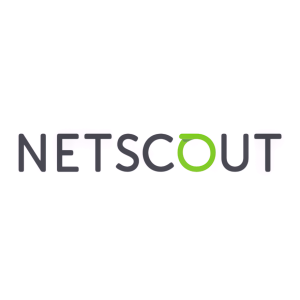Direct-Path Attacks Surge in 2022 Making Up Half of All DDoS Attacks According to Latest NETSCOUT DDoS Threat Intelligence Report
DDoS traffic reached a high of 436 petabits in a single day, while application-layer attacks increased
With over one billion websites worldwide, HTTP/HTTPS application-layer attacks have increased by
“DDoS attacks threaten organizations worldwide and challenge their ability to deliver critical services,” said
Additional highlights from NETSCOUT’s findings include:
- Peak DDoS alert traffic in a single day reached as high as 436 petabits and more than 75 trillion packets. Service providers rigorously scrubbed a large percentage of this traffic, while enterprises eliminated an additional daily aggregate average of 345 terabytes of unwanted traffic.
-
Direct-path attacks have increased by
18% over the past three years, while traditional reflection/amplification attacks decreased by nearly the same, highlighting the need for a hybrid defense approach to weather the fluctuating attack methodology. -
The
U.S. national security sector experienced a massive 16,815% increase in attacks related to the pro-Russia Killnet group, including a spike in attacks after President Biden’s public remarks at the G7 Summit and another spike the same day the French andU.S. presidents re-affirmed their support forUkraine . - NETSCOUT ASERT analysts tracked over 1.35 million bots from malware families like Mirai, Meris, and Dvinis in 2022, with enterprises receiving over 350,000 security-related alerts with botnet involvement. By contrast, service providers received approximately 60,000 alerts where bots were present.
-
Carpet-bombing attacks, a technique that simultaneously targets entire IP address ranges, increased by
110% from the first to the second half of 2022, with most attacks against ISP networks. -
A barrage of DDoS attacks hammered EMEA’s optical instrument and lens manufacturing sector, resulting in a 14,
137% increase, mainly against one major distributor with over 6,000 attacks over four months. -
DDoS attacks on the wireless telecommunications industry have grown
79% since 2020, primarily due to the increase in 5G wireless to the home. It accounts for20% of all DDoS attacks for a specific industry, second only to wired telecommunications carriers.
NETSCOUT's DDoS Threat Intelligence Report covers the latest trends and activities in the DDoS threat landscape. It incorporates data from NETSCOUT's ATLAS – part of the company’s Visibility Without Borders approach – along with expert insights from
The visibility and insights compiled from the global attack data represented in the DDoS Threat Intelligence Report, and seen in the NETSCOUT Threat Horizon portal, fuel the ATLAS Intelligence Feed (AIF). In addition, AIF continuously arms NETSCOUT's security portfolio enabling it to automatically detect, adapt, and block threat activity for enterprises and service providers worldwide.
Visit our interactive website for more information on NETSCOUT's semi-annual DDoS Threat Intelligence Report. You can also find us on Facebook, LinkedIn, and Twitter for threat updates and the latest trends and insights.
About NETSCOUT
©2023
View source version on businesswire.com: https://www.businesswire.com/news/home/20230404005288/en/
Editorial Contacts:
Manager,
+1 781 362 4330
maribel.lopez@netscout.com
+1 404 502 6755
NETSCOUT-US@FinnPartners.com
Source:







